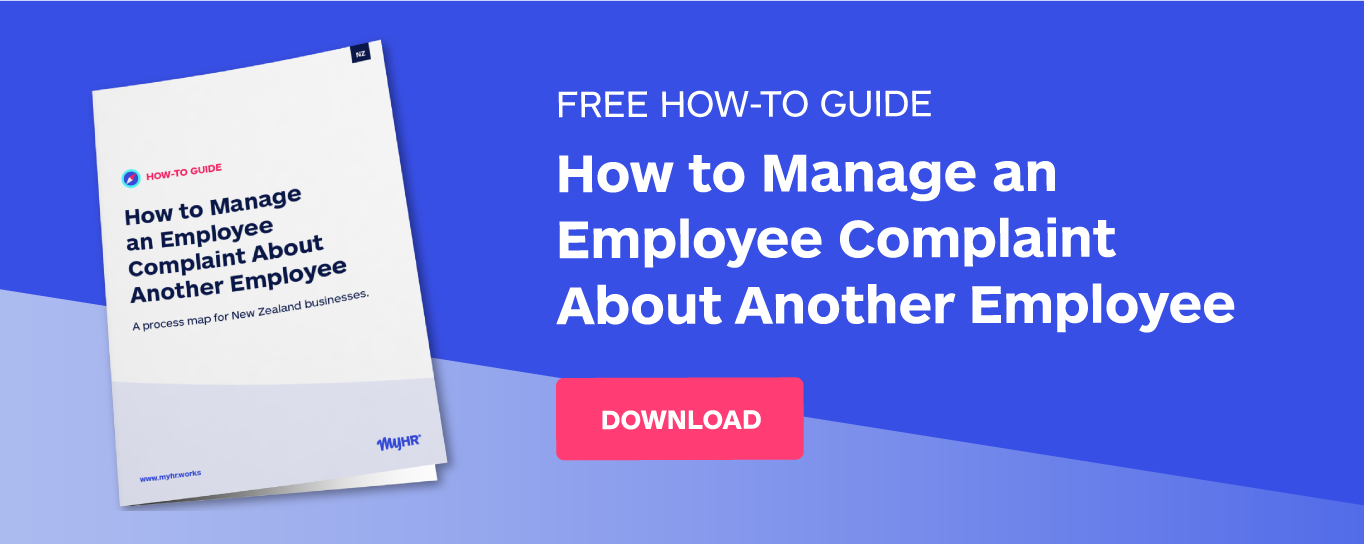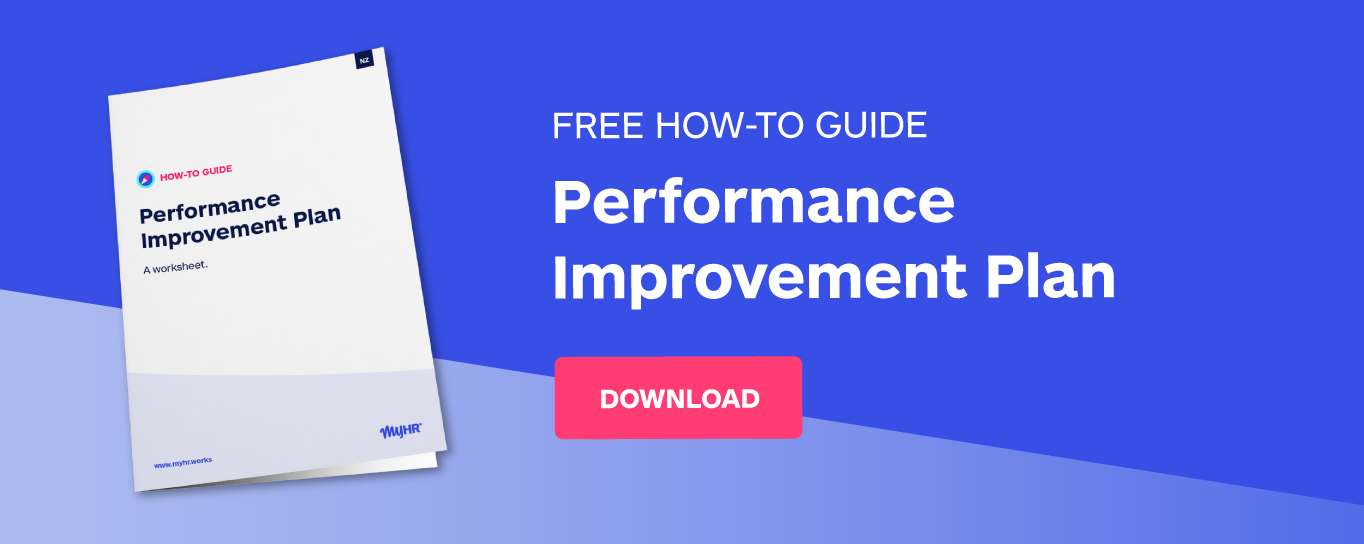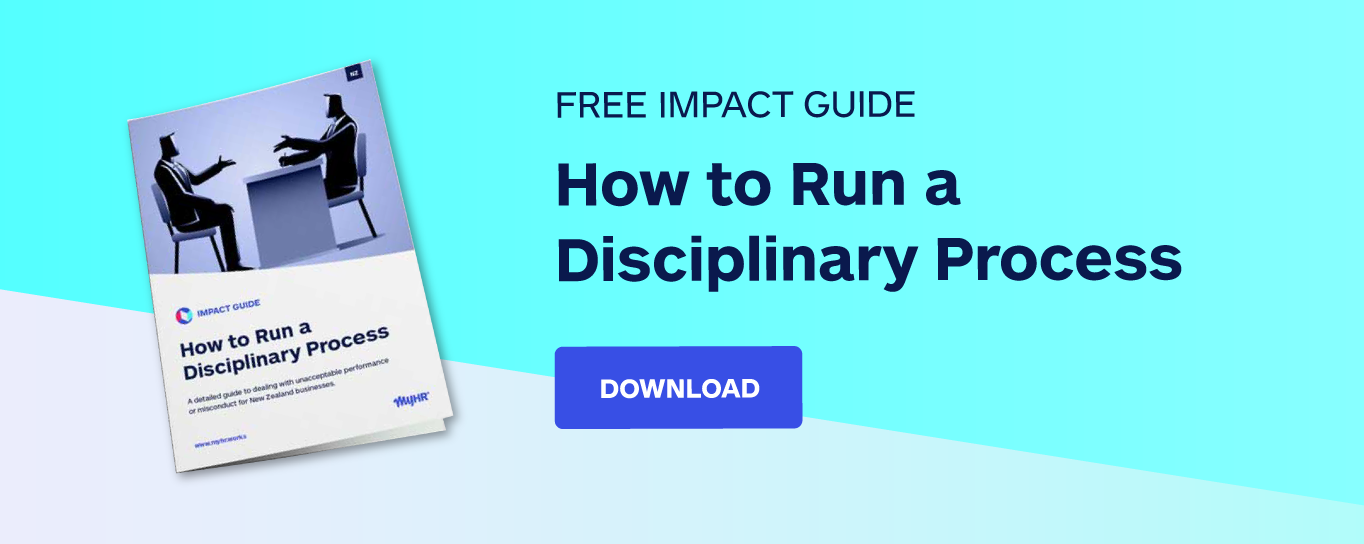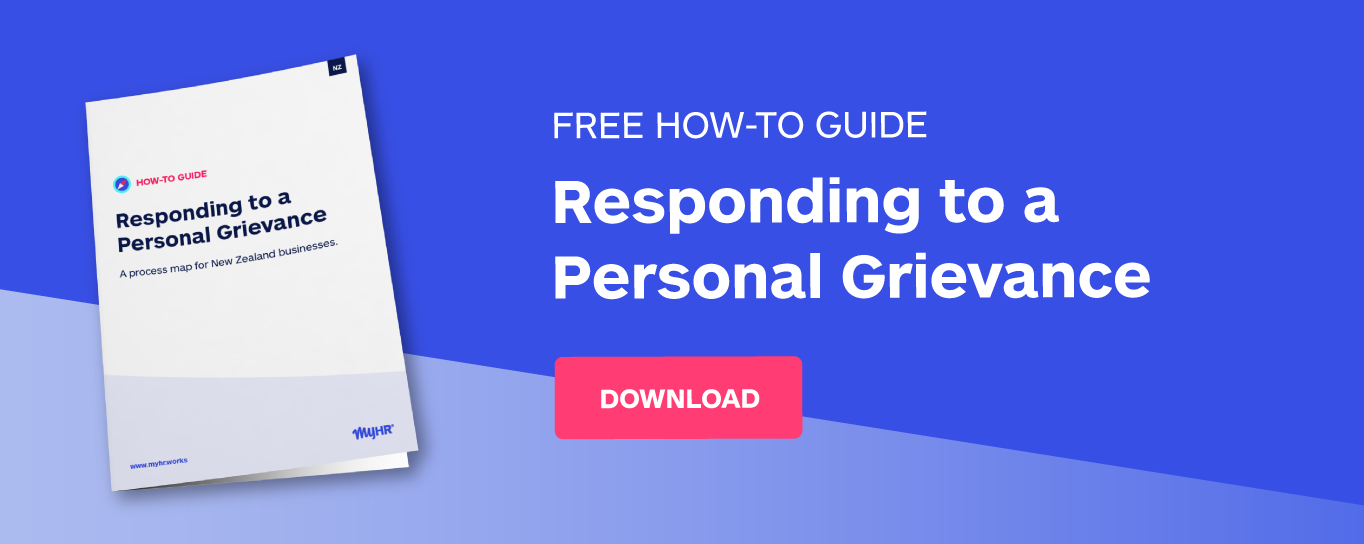A key ingredient in a thriving business is a workplace environment where your people can excel. A team of skilled individuals all pulling in disparate directions isn’t nearly as effective as a team of skilled individuals all focused on achieving a shared goal.
This won’t come as a great revelation to most employers and managers, but building and maintaining an environment that fosters healthy, productive relations between team members isn’t always that easy.
People have different ways of working and communicating. Our motivations and abilities may vary, and many factors can affect our mood and performance. This means that every business needs to think about how its team members interact and take an active, structured approach to shaping and guiding relationships, from individual connections to the company-wide culture. Left untended, the social dynamics of your workplace can get bogged down and instead of having positive, motivated employees who can constructively express opinions and resolve problems, your team will be wasting valuable time on unnecessary battles and disputes.
This white paper looks into the many facets of employment relations, from ways to build and maintain healthy employee relationships, to managing issues and resolving conflicts and complaints (people aren’t perfect, after all). We’ll also look at what to do with problematic employees, the disciplinary process, and how to deal with personal grievances.
There’s a lot to cover, so let’s dive in.
Building quality employee relationships and maintaining them
Business is all about relationships. We stress this a lot. Like any relationship, relations within the business – whether it’s between coworkers at the same level, or employees and their manager or employer – require attention and effort.
Establishing a framework and social support system can help people work more harmoniously together. How extensive and formalised these efforts are will depend on the nature of the business, its size and goals etc., but they work best as a cohesive set of initiatives aimed at creating an environment where people feel supported and empowered to do their best, both individually and as a team.
Part of the foundation-laying from a company perspective is thinking about what good employee relationships look like and defining how you plan to manage and guide them. You’ll also want to factor in how to measure the effectiveness of your efforts, so you can see what works, what doesn’t, and how to improve.

The bedrock is individual relationships and the individuals within them. Everyone performs a valuable role within the business and if all your team members feel understood and supported, the business can expect more enthusiastic, confident employees that get along with other people better and treat them better, be they coworkers or customers.
Good communication is fundamental. It helps build connection and understanding, linking people together. If the company fosters an open, inclusive environment where people feel free to raise issues and give and receive feedback, then staff should generally get on and work well together. You will have fewer issues and be much better placed to quickly resolve any that arise.
At an operational level, everyone in the organisation should clearly understand the company's policies and objectives, and know how their individual efforts contribute to its success. At a less formal level, opportunities for people to spend time together doing things other than working can help strengthen the bonds among team members and create a more congenial atmosphere.
That’s not to assume that everyone is a natural at prompting and managing healthy relationships; you may have to look at training and support. Giving people opportunities to learn and improve their communication and interpersonal skills not only imparts useful know-how, it's a clear indication that the business takes employee relations seriously.
As always, management needs to take the lead, because there’s no point expecting your team to act in ways that the business’s leaders don’t embody themselves. A healthy organisation-wide culture of teamwork, fairness, and mutual respect starts at the top.
Manage issues
Talking about strong relationships and open communication can sound a bit feelgood. There are always going to be times when people clash or disagree, so effectively managing and resolving issues is a big part of any healthy workplace culture.
The trick is focussing on maintaining a productive day-to-day relationship and providing opportunities for discussing and resolving any problems before they become major.
The workplace environment should be supportive and respectful, so people can feel comfortable raising issues and working through disagreement. Some people (including managers) will need more encouragement and support than others. You also need to strike a balance between team members sharing their opinions and suggestions and not having constant debate and disruptions.
Thankfully, many disagreements and disputes are minor and get resolved before they turn into full-blown disputes and without management having to step in.
Larger, more persistent problems or severely strained workplace relationships may require mediation. Third-party assistance can help people lower their defences and work to find solutions they can live with.
Concerns about an individual’s behaviour or performance need to be addressed sooner rather than later. Some bosses are okay with letting the small stuff slide, but allowing even low-level poor conduct or attitude can have an incredibly damaging effect, not only on the person’s performance but on others around them.
Fortunately, issues are easier to spot and broach when employment relations and lines of communication are healthy. You’re less likely to be blindsided by major issues and will be better placed to work together on resolving small problems without having to use formal processes.
Illustrating the effect a person is having on the team – whether that is being disruptive or letting other members down – can powerful tool for raising awareness of the problem and to motivate the person to change.
Always be aware of your legal responsibilities in dealing with employment relationship problems. Make sure each employment agreement contains a simple, plain-language explanation of how to resolve issues and that every team member knows the process for raising, investigating, and resolving conflict. Treat people fairly and with as much compassion as possible, and follow proper process.
Unhealthy forms of conflict such as abusive behaviour, repeated mistreatment, bullying, harassment, or discrimination should never be tolerated and need to be dealt with using formal procedures.
Sharing the responsibility for taking problems seriously and tackling them while following fair process will minimise any potential disruptions, lessen stress, and help keep the business safe from personal grievance cases (we’ll look at this more closely later).
Healthy conflict
Unfortunately, research indicates that NZ companies aren’t that good at effectively resolving workplace conflict.
Many Kiwi employees find themselves in disagreements or arguments that are serious enough to compromise their ability to do their job. Common effects range from stress and anxiety to anger, followed by a loss of focus on work, reduced confidence and motivation, avoiding communication, and taking time off or leaving the job by either choice or dismissal.
The longer any conflict goes on, the greater the impact on employees’ performance - both of those directly affected and of others around them.
Having even a few of your team members upset, distracted, or avoiding work is obviously bad for business, so it makes clear sense to support and equip staff with the skills to understand conflict and handle it well.
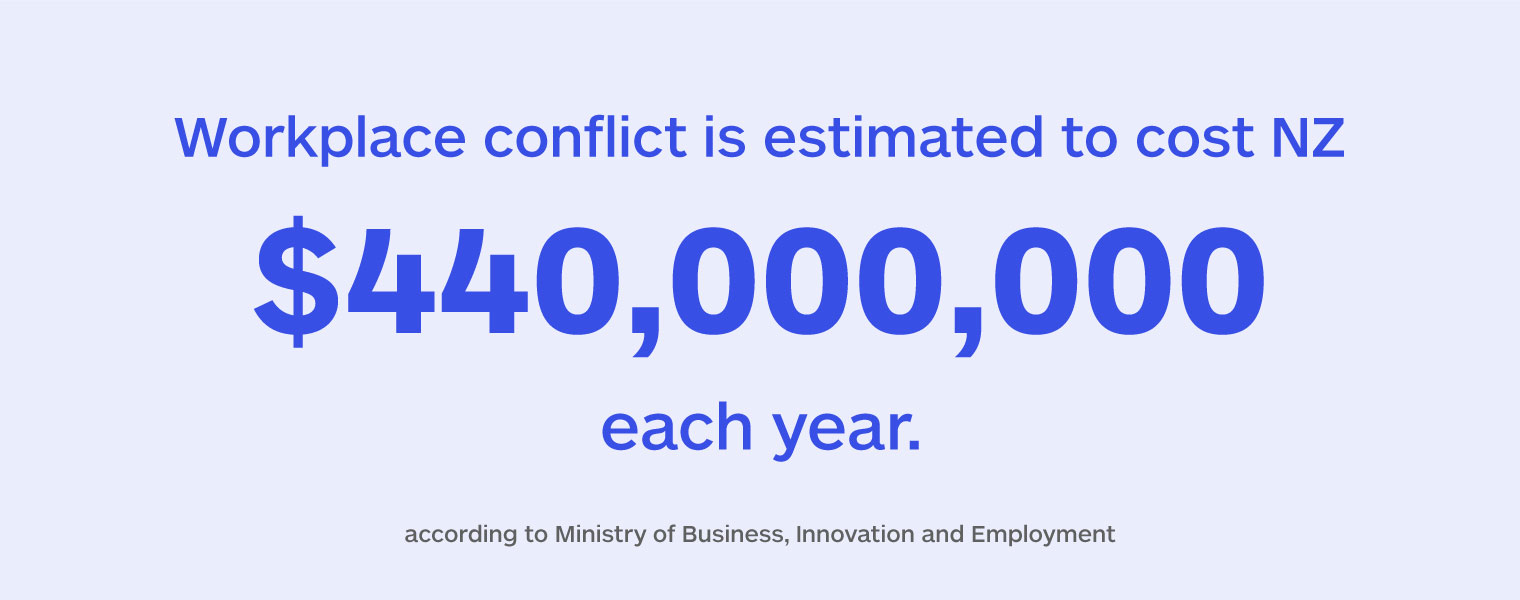
The focus should be on helping people understand their own behaviour, motivations and reactions, and how these impact others.
Another vital component is learning to remove the heat from disputes, by not making them personal or combative, and trying to stay constructive. Where you are managing conflict, make it about the issue or problem, and not about the person - it’s much easier to stay focussed and professional when you don’t feel like you are being attacked or identified as the problem itself!
Aside from helping meet health and safety obligations to workers, the practice of working positively through conflict is good at bringing the best out in people. It can also can be a constructive, energising process that helps the business examine and evaluate ideas, options, and practices.
If people are worried about the negative consequences of conflict or are distracted or disenchanted by it, the company could well be missing out on valuable insight and feedback.
Deal with complaints
There will be times when conflict between co-workers leads to a complaint to a manager or boss.
While we don’t think businesses necessarily need a formal policy for dealing with employee complaints, we do recognise the need to approach them with sincerity and tact.
Bad behaviour is a liability to the company, legally and commercially, so always look into complaints and treat them seriously. You need to be able to work out whether a complaint is justified, how serious it is, and whether it warrants further action.
Many complaints stem from minor incidents, flash arguments, or perceived wrong-doings, and can be resolved quite easily and informally. If it’s a personality clash, encourage people to step up and figure out how to get on with each other.
If a relationship is severely strained, mediation can help people air their issues and find solutions they can live with.
If it is a genuine case of bullying (all too common in NZ workplaces), harassment, or discrimination, you need to launch a formal investigation straight away and ensure that the person who has complained is safe and supported to do their job. Other complaints may be clear cases of misconduct that will require disciplinary action (more on this one in a bit).
Ignoring a complaint or not acting appropriately could mean it becomes a larger problem that is harder to resolve and more damaging to staff and the business as a whole. It could also lead to legal repercussions.
It’s far better to deal with issues with a minimum of exacerbation and distress, supporting your team members, and building a mature, resilient work environment.
Manage problem employees
Complaints may reveal an employee who is consistently disruptive or troublesome. While good recruitment and onboarding processes and a healthy company culture should help build a cohesive, cooperative team, there’s always a chance you’ll wind up with an employee who doesn’t fit or doesn’t want to.
We’ve already discussed the harm problematic people and behaviour can cause, and again the best way to turn the situation around is by addressing it (or them, in this case).
Start by gaining the clearest possible understanding of what’s going on. There may be issues outside work that are creating stress. It may be a personality clash or a poor alignment of their skills with their duties. Once you have looked into it and have a decent handle on the problem, meet with the person to raise your concerns and explore solutions.
Create a professional yet open environment where they feel comfortable enough discussing what’s going on. Be specific about how their behaviour is affecting others and having a negative influence on the business.
Give the person ample chance to respond. Ask them for their viewpoint and how they think things could improve, then come up with a plan to replace the disruptive behaviour with more positive action.

Make sure you let them know what the consequences will be if they don’t shape up, e.g. putting them on a performance improvement plan or starting disciplinary procedure.
Decide on a timeframe and give the employee plenty of opportunity to improve. They will need your support, so schedule in regular meetings and catch-ups to keep track of progress and give feedback.
With the right guidance, most employees will recognise the negative behaviour and try to turn it around. If the undesirable behaviour continues, you will need to move onto more formal disciplinary action.
The disciplinary process
The disciplinary process is a tool for working through issues with employees and finding a constructive way forward. The process itself is clearly laid out in employment law and must be fair and reasonable at all times.
It’s not about punishing the person and consultation is absolutely essential. No decisions are final until the employee has had a chance to put forward their side of the story and you have factored that into your decision.
Taking shortcuts or disregarding proper process will put you at risk of personal grievance action and any potential payouts or penalties, so make sure you follow all the steps.
Establish solid grounds for taking action before you start. Look into the matter fully, talk to witnesses (if appropriate), and check the employment agreement and any relevant company policies.
The process then centres around 3 key meetings with the employee:
- Notification meeting – you formally present your concerns to the employee; the employee doesn’t have to respond then and there.
- Employee response meeting – the employee gets a chance to explain and give feedback.
- Outcome meeting – you present your decision.
Before the response meeting, you should give the employee time to seek advice and prepare their response. They can choose not to respond, but you must give them the opportunity.
You should also take time to consider their feedback before you make and present your decision. The length of the adjournment will depend on the amount of information you need to factor in, but we suggest taking at least one working day (and possibly more) to review and consider everything before making your final decision. You may need to ask further questions or hold another meeting to clarify some points.
The outcome may mean you proceed with a formal warning or the employee may have proved it was not their fault or there were extenuating factors.
Set out your decision in a letter so it clear what information was presented, how you reached the outcome, how long any disciplinary action is valid for, and what the next steps are for supporting the employee’s improvement, such as changes to their duties or further training.
Hopefully, the disciplinary process works and the employee’s behaviour or performance improves. You should do all you can to support this and do what you say you will.
If the employee continues to underperform or behave badly, you can hold them closely to account through consecutive disciplinary processes (known as performance management). After two written warnings, you can look at dismissal for misconduct (behaving inappropriately in relation to work), or continued poor performance (doing their job poorly).
Remember, if you don’t follow correct process, any warning or dismissal may be deemed unfair, and therefore invalid. You might be up for compensation payments and legal bills.
Responding to a personal grievance
If an employee or ex-employee believes they have been unfairly dismissed or been treated disadvantageously by their employer, they can raise a personal grievance.
Personal grievances can be extremely expensive and time-consuming for businesses to deal with.
Following proper procedure and building strong employment relations should mean the business has fewer incidents, but no one is completely immune. Sometimes, things go wrong and the relationship turns sour.
If you are faced with a personal grievance, take your time to get to the bottom of the issue and consider whether to accept or deny the complaint (employers have 14 calendar days to respond).
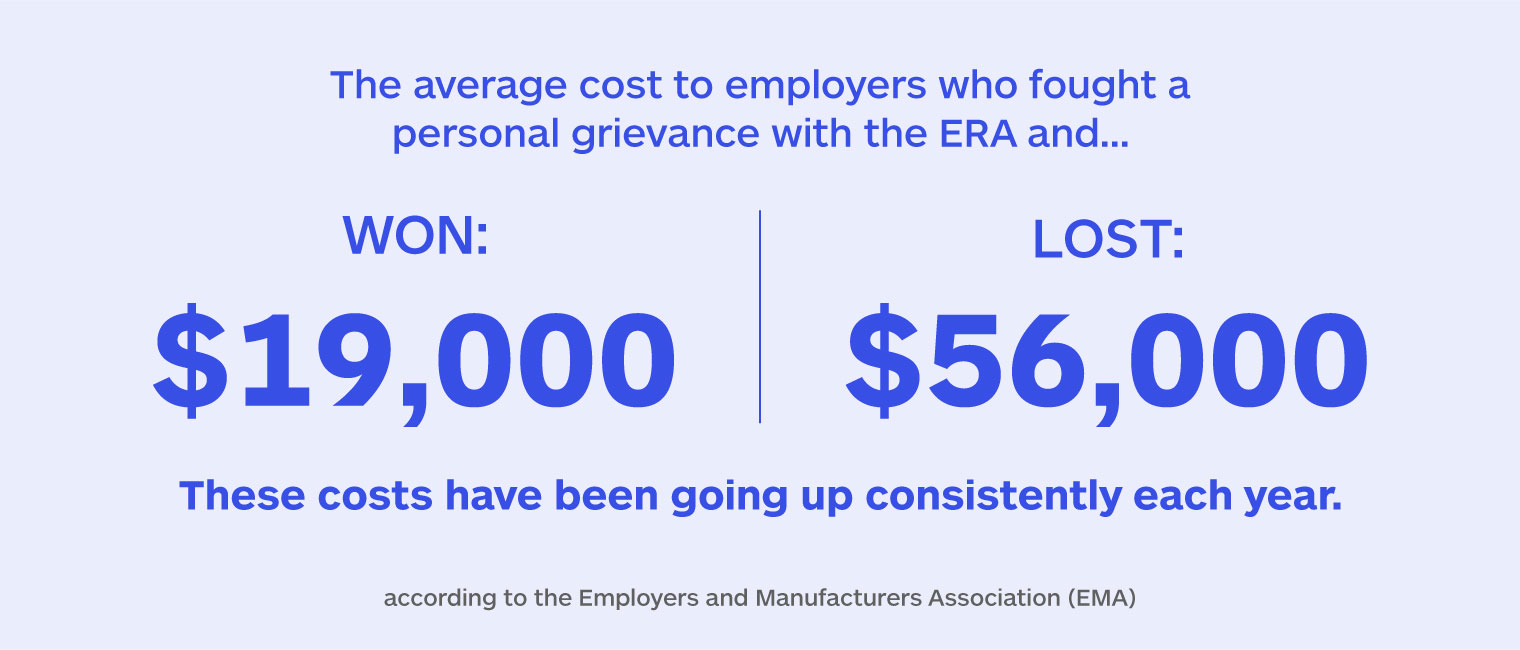
You can settle the claim at any time, if both parties agree, so it’s often a case of weighing up if it’s wiser to save time, money, and energy by settling, e.g. with a payment or reinstatement, or whether you want to contest the claim.
Resolving the claim without having to go through formal channels is usually the best result. If the employment relationship has been mostly healthy and you’ve followed fair processes, settling should be more straightforward.
Either party can choose to go to mediation, but mediators can only make binding recommendations if both parties agree.
The employee also has the option of lodging their claim with the Employment Relations Authority (ERA) at any stage of the process.
It’s worth noting that the bulk of personal grievances get resolved through mediation or a confidential settlement before they reach the ERA or Employment Court.
If you don’t reach an agreement and the claim heads to the ERA, you should be aware that even if you win, the costs will be significant. Think again about whether time and money (or your principles) are more important, as it may be best to try to reach a settlement.
Expert advice along the way could mean the difference between early resolution or ending up in the ERA or Employment Court.
